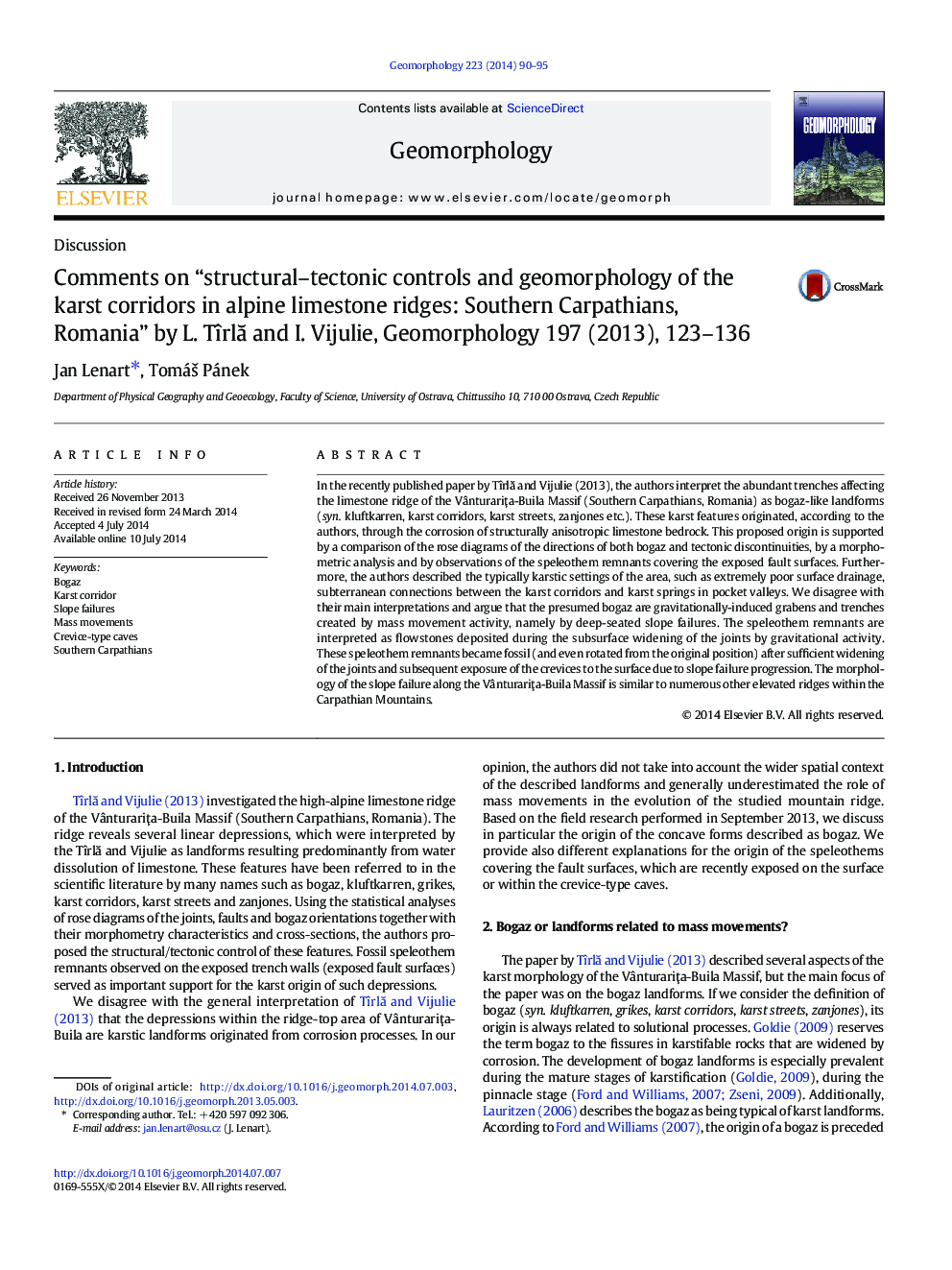| کد مقاله | کد نشریه | سال انتشار | مقاله انگلیسی | نسخه تمام متن |
|---|---|---|---|---|
| 6432392 | 1635426 | 2014 | 6 صفحه PDF | دانلود رایگان |

- We discuss the origin of the assumed bogaz landforms.
- The described forms are re-interpreted as gravitationally induced.
- We describe the origin of the speleothem remnants.
In the recently published paper by TîrlÄ and Vijulie (2013), the authors interpret the abundant trenches affecting the limestone ridge of the VânturariÅ£a-Buila Massif (Southern Carpathians, Romania) as bogaz-like landforms (syn. kluftkarren, karst corridors, karst streets, zanjones etc.). These karst features originated, according to the authors, through the corrosion of structurally anisotropic limestone bedrock. This proposed origin is supported by a comparison of the rose diagrams of the directions of both bogaz and tectonic discontinuities, by a morphometric analysis and by observations of the speleothem remnants covering the exposed fault surfaces. Furthermore, the authors described the typically karstic settings of the area, such as extremely poor surface drainage, subterranean connections between the karst corridors and karst springs in pocket valleys. We disagree with their main interpretations and argue that the presumed bogaz are gravitationally-induced grabens and trenches created by mass movement activity, namely by deep-seated slope failures. The speleothem remnants are interpreted as flowstones deposited during the subsurface widening of the joints by gravitational activity. These speleothem remnants became fossil (and even rotated from the original position) after sufficient widening of the joints and subsequent exposure of the crevices to the surface due to slope failure progression. The morphology of the slope failure along the VânturariÅ£a-Buila Massif is similar to numerous other elevated ridges within the Carpathian Mountains.
Journal: Geomorphology - Volume 223, 15 October 2014, Pages 90-95